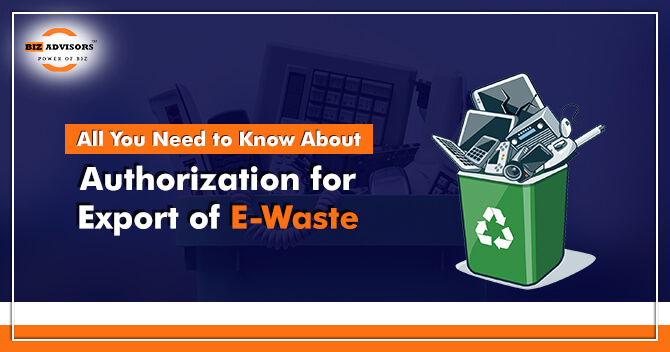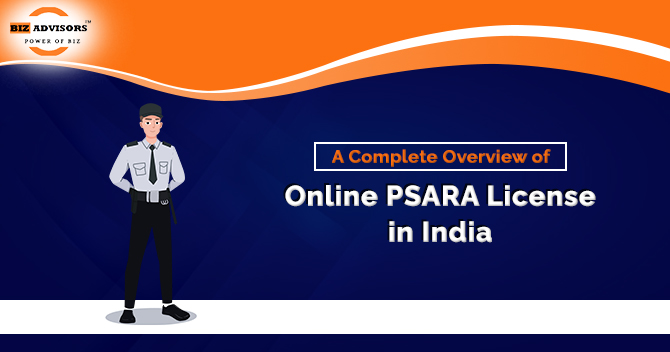The amount of e-waste produced globally has increased exponentially as a result of the rise in electrical and electronic equipment (EEE) consumption. A few examples of electronic devices and appliances with great value even when abandoned are old and discarded phones, TVs, laptops, desktops, refrigerators, power backup systems, etc. The fact that India’s e-waste processors have a sizable stockpile of expensive scrap that includes precious metals like gold and silver has put them in a catch-22 scenario. To disassemble and collect these priceless metals, however, they must adhere to rigid national rules. As a result, E-waste Export Authorization became necessary. Basically, the small-scale e-waste processors that make up the majority of the waste management industry lack the sophisticated equipment needed to profitably extract these metals from the junk. Large-scale producers of electronic garbage, including merchants, dismantlers, and even large customers, are increasingly preferring to export this wasted scrap. They prefer to sell e-waste to nations that have established infrastructure for safe and effective metal recovery, and they profit greatly from the practice. In this article, we will discuss the Authorization for Export of E-waste.
What does E-waste Export Authorization do?
One of the biggest markets for electrical and electronic equipment is India. As a result, the nation produces a lot of electronic garbage. In addition to recycling and destroying e-waste domestically, India also exports used EEE and valuable scrap components to numerous nations with extensive infrastructure and the ability to securely recycle such garbage. The E-waste Export Authorization is necessary to guarantee that any waste transport complies with all national regulations. Additionally, it makes sure that there is never any unwanted material concealed as e-waste sent in the package, which could cause issues for the importing country. The Port and Customs Authorities are required by the Customs Act of 1962 to examine the export paperwork and the scrap in order to detect any unlawful trade and notify the MoEF&CC in cases of non-compliance.
List of E-waste that can be Exported
The following list of E-waste is appropriate for export:
1. Metallic, non-dispersible wastes made of metal and metal alloys;
2. Metal and garbage including metals include alloys made of tellurium, antimony, cadmium, and leads.
3. Waste containing antimony, cadmium, lead, and tellurium compounds, among other substances.
4. Metal carbonyls in waste.
5. Galvanic muck
6. Wasted alcoholic beverages are used for metal-pickling.
7. Zinc processing waste, dust, and sludges such as hematite, jarosite, etc. need to be leached.
8. Discarded zinc waste
9. Electrical and electronic scrap or assemblies.
10. Wastes are mostly composed of inorganic components, however, may also include metals and organic compounds.
11. Bulk finished clean metal scrap, including alloys, is available (sheet, plates, beams, rods etc.) fragments of the anthem,ony – Scrap beryllium Scrap cadmium, and lead waste (excluding lead-acid batteries) Tellurium scrap, and Selenium scrap.
12. Metallic-dispersible waste of molybdenum, tungsten, titanium, niobium, tantalum, and rhenium metal and metal alloys (metal powder).
13. Heavy proportion non-ferrous scrap that is mixed with cadmium, antimony, lead, and tellurium.
14. Solid remnants of precious metals may also contain traces of inorganic cyanides.
15. the non-dispersible by-products of mining.
16. Glass waste that cannot be recycled.
17. Fluoride-calcium sludge.
18. Dated multipurpose printing and copying equipment
Documents required to get Authorization for Export of E-waste
The following are the documents required to get Authorization for the Export of E-waste:
1. Completed Form 5
2. Reasons for exporting
3. Valid Operation Permission under the Water Act of 1974[1] and the Air Act of 1981
4. A valid authorization as defined by the 2016 E-waste (Management) Rules.
5. Insurance coverage for environmental and health risks while traveling
6. Acknowledgment from the relevant SPCB/PCC for receiving a copy of the application
7. A copy of the contract between the importer and exporter and the buyer
8. A copy of the MoEF&CC Ministry’s most recent authorization (if applicable)
The procedure to get Authorization for the Export of E-waste
The procedure that must be followed is as follows:
1. Applicants should submit an application to the Ministry of Environment and Forest;
2. The applicant must demonstrate that the company has a physical presence in India in order to be granted permission to export e-waste.
3. Additionally, the individual proposing the export must get MoEF and SPCB’s NOC;
4. The importing nation must also give its written authorization in advance for India to export trash. For instance, a recycler or dismantler must get Australia’s prior informed approval before exporting rubbish there.
5. The State Pollution Control Board (SPCB) concerned, the Pollution Control Board of the State where the port of export is located, and the Port and Customs authorities concerned will receive a copy of the permission granted under sub-rule (2) from the Ministry of Environment and Forest in order to ensure compliance with the conditions of the export permission.
6. The exporter must make sure that no shipment is despatched before the importing nation has given its prior, informed approval.
7. Additionally, the exporter must make sure that a movement document in Form 6 is included with the shipment.
8. The garbage exporter is responsible for keeping track of the e-waste.
Conclusion
Companies are urged to separate wastes at the source because the disintegration of electronic devices will require a longer process and different methods. The Extended Producer Responsibility Plan, which is a component of the E-Waste Management Rules, was introduced by the Government of India to solve the problem. Companies will be required to recycle a minimal portion of the manufactured electronic devices under the scheme. The ceiling limit for hazardous substances used in the manufacture of electronic items is mentioned in the E-Waste Management Rules. The regulations also outline how to apply for permission from the Pollution Control Board to handle e-waste. Seek professional advice for Authorization for the Export of E-waste. You can also reach Bizadvisors.io for more information.
Read our article:All You Need to Know About PRO Authorization: An Ultimate Guide
 9559179325
9559179325 9559179325
9559179325





